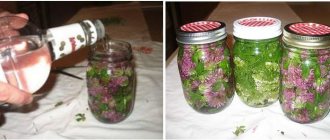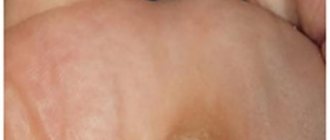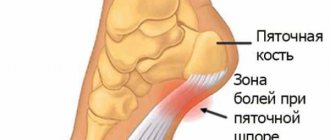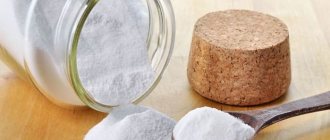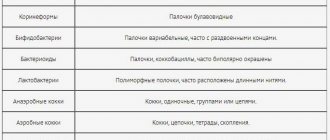Causes
The main causes of the disease are:
- injuries of the maxillary sinuses that violate the integrity of the mucous membrane;
- mechanical damage to the nasal septum;
- not fully cured runny nose, ARVI, flu;
- congenital anomalies of the structure of the nasopharynx organs;
- penetration of pathogenic bacteria, viruses, fungi;
- constantly dry air in the room;
- chemical burns of the mucous membranes of the sinuses;
- polyps, adenoids;
- malignant neoplasms;
- allergy;
- various systemic diseases (tuberculosis, HIV and a number of others);
- radiation therapy.
X-ray characteristics of the maxillary sinuses
X-rays of the maxillary sinuses should be interpreted not by a radiologist, but by the attending otolaryngologist. Accumulations of pus in the nasal sinuses and their swelling are often equally visualized on radiographs. If you mistake the swelling for purulent accumulations, then you can make a puncture in vain, which will not give any positive results. Often, the liquid contents of the maxillary sinus with sinusitis are characterized by a clear visual level, which allows us to talk about its purulent nature.
With normal darkening of the sinuses, the results of radiography must be supported by other types of diagnosis . It is unacceptable to practice when a diagnostic puncture is performed for the sole purpose of determining the presence of pus in the sinus. An MRI or CT scan often allows one to clarify the results of an x-ray examination and differentiate between normal swelling and the presence of pus. The same applies to ultrasound scanning of the sinuses.
Symptoms of sinusitis
The main clinical signs of the disease are:
- nasal congestion;
- the appearance of mucopurulent discharge;
- pain, heaviness, tension, pressure in the nose;
- decreased sense of smell;
- headache;
- swelling of the zygomatic part, cheeks on the side of inflammation.
If the sinus is filled with fluid, then when the head is tilted forward, the pain intensifies. In the acute course of the disease, symptoms of intoxication of the body are observed (fever, chills, general weakness). Children with sinusitis usually experience difficulty in nasal breathing, light, transparent discharge, and headaches. Also, the clinical picture depends on the type of disease. For example, with odontogenic sinusitis, nasal discharge has a foul odor.
What is sinusitis?
Sinusitis is an extremely unpleasant disease in which the maxillary sinuses become inflamed. They are located to the right and left of the nose, directly under the eyes. By the way, these sinuses are named after the physician Nathaniel Highmore, who described them in the 17th century. Often sinusitis in adults and children is a complication of a cold (ARVI, ARI). It is believed that this disease appears only in the cold season (autumn and winter), but this is not so. Hot weather, air conditioning, drafts, swimming in cold water and diving to depths can also provoke sinusitis. Therefore, take care of yourself at any time of the year and try not to get too cold! Now we will tell you about the anatomy of the maxillary sinuses. As was written above, the sinuses are located directly under the eyes and are connected to the nose through a narrow opening, the diameter of which is no more than 3 millimeters. Imagine, 3 millimeters is the size of a pen refill. And through this small hole the mucus should come out of the sinus. When the mucous membrane becomes inflamed and swelling appears, this hole becomes blocked. If you don’t go to the ENT specialist in time, the hole will be completely blocked, the mucus will not find a way out and will gradually begin to turn into pus. This is due to bacteria actively multiplying in the sinuses. Pus will accumulate, and the condition will become worse. The picture is extremely unpleasant.
Now you understand why sinusitis is not a harmless runny nose! The consequences of this disease can be sad and unpleasant, and in rare cases, fatal. Most often, such consequences include meningitis (damage to the lining of the brain), damage to the organs of vision and hearing, sepsis (blood poisoning), diseases of the respiratory system, inflammation of bone tissue, brain abscess, thrombosis. Because of these reasons, we advise you not to delay your visit to the doctor. How to understand that you have sinusitis.
Forms of the disease
Based on the type of pathogen, the following types of sinusitis are distinguished:
- viral;
- fungal;
- allergic;
- bacterial;
- traumatic.
According to the nature of the inflammatory process:
- acute sinusitis;
- chronic sinusitis.
Based on the nature of the clinical picture, the following forms of sinusitis are distinguished:
- catarrhal;
- polyposis;
- purulent;
- atrophic;
- hyperplastic;
- mixed (several forms of the disease are combined at the same time).
General principles for troubleshooting
- Rinse the nose with hypertonic saline solutions at room temperature;
- Use of vasoconstrictor drops;
- Avoiding hypothermia and drafts;
- Normalization of diet;
- Removing accumulations of mucus from the nasal cavities (especially important if we are talking about infants who begin to refuse mother's milk).
It is not recommended to use heating, as are any untested herbal, alcohol and other folk remedies.
Treatment at home
What to do with sinusitis? What first aid should be given to the patient? How to rinse the maxillary sinuses? Treatment of the disease includes drug therapy, as well as home and folk remedies that are used as auxiliary methods.
- Drug therapy. How to treat sinusitis at home without antibiotics? Therapy consists of regularly rinsing the nasal cavity with salt solutions and taking vasoconstrictor drugs (in children, often in combination with antiallergic drugs). In addition, to relieve swelling and open the natural canal that connects the sinuses to the nasal cavity, the use of local glucocorticosteroids is indicated. Antibiotics are prescribed only if the bacterial nature of sinusitis is confirmed by laboratory testing.
- Home and folk remedies. How to get rid of sinusitis without a puncture at home? This can be done using folk remedies. They are quite popular among the population and can be used as part of complex therapy for the disease (with the permission of the attending physician). Folk remedies are tinctures and decoctions of medicinal plants, pharmaceutical solutions of ointments, bee products, homeopathic and other remedies.
There are several options for using home remedies:
- external - for this purpose, use oils and ointments based on golden mustache, cyclamen root, Kalanchoe and a number of other plants;
- inhalations - use chamomile decoction, essential oils, bay leaf, soda solution, potato decoction;
- instillation into the nose - for these purposes, use golden mustache, juice of garlic, radish, onion, Kalanchoe, cyclamen root, sea buckthorn oil;
- washing the nasal cavity with a solution of sea or table salt, chamomile decoction, hydrogen peroxide.
Treatment of chronic sinusitis at home in a child or adult should be carried out under the supervision of a specialist.
Attention! Treatment of sinusitis in adults at home with medications should be prescribed by an ENT specialist. Self-medication is unacceptable!
How to treat sinusitis at home?
You are probably familiar with the term “rhinitis” - inflammation of the nasal mucosa. Did you know that the nose is surrounded by special bony cavities called sinuses (otherwise known as sinuses)? Did you know that they can also become inflamed?
Today we will talk about inflammation of one of these sinuses with Alexandra Nikolaevna Emelyanova, Candidate of Medical Sciences, otolaryngologist at Expert Kursk LLC.
— Alexandra Nikolaevna, please tell me what sinusitis is?
This is an inflammation of the mucous membrane of the maxillary sinus, or, in other words, the maxillary sinus.
From the point of view of treatment, it is advisable to divide sinusitis into acute and chronic. Acute sinusitis lasts less than 12 weeks, chronic sinusitis lasts more than this period.
— What are the main symptoms of sinusitis in adults and children?
Typical symptoms include nasal congestion and nasal discharge. There may also be a feeling of heaviness, fullness or pain in the area of the projection of the nasal sinuses, a decrease or complete absence of sense of smell, and headaches. There are also general symptoms in the form of increased body temperature and malaise. In addition to these symptoms, children often have a cough, both during the day and at night.
— Is it possible to treat sinusitis at home and if so, how effective is it?
Treatment at home is possible, but only if we are talking about mild sinusitis. This is a situation when, for example, the general condition of the patient, be it an adult or a child, is not changed, there is no fever, headaches, and performance does not suffer. At the same time, the patient must understand that it is mandatory for him to see a doctor even in this case. Only a doctor can determine the possibility of treatment at home.
— If the patient is still allowed to stay at home, how is sinusitis treated?
When a doctor decides to treat a patient at home, it will most likely be possible to do without the use of antibiotics. The drugs traditionally used in the treatment of sinusitis are decongestants, which relieve swelling of both the mucous membrane of the nasal cavity and in the maxillary sinus itself, thereby facilitating the outflow of inflammatory fluid from it.
Hormonal drugs are also used - glucocorticosteroids, which have a powerful anti-inflammatory effect; medications that improve the breakdown and removal of inflammatory mucous contents from the sinuses; drugs that increase the resistance of mucosal cells to substances formed during inflammation.
— Tell me, please, when are antibiotics used in the treatment of sinusitis?
Antibiotics are prescribed for moderate to severe disease. But in some cases, antibiotics may be recommended for a patient with mild sinusitis - for example, if it lasts more than 7-10 days.
— How many days does sinusitis usually take to be treated? What does this depend on?
If we are talking about acute sinusitis, then the treatment period usually ranges from 10 days to three weeks. The factors on which the time of therapy depends include, for example, the individual resistance of the body, the anatomical features of the structure of the nose and paranasal sinuses, environmental factors, and working conditions (for example, hazardous industries).
— Alexandra Nikolaevna, are any drops or a nebulizer used in the treatment of sinusitis?
Undoubtedly. There are two groups of drops.
The first group is vasoconstrictor nasal drops. They relieve swelling of the mucous membrane and help improve the outflow of contents from the sinuses.
The second group includes various drops of general action taken orally. They have antibacterial, antiviral, anti-inflammatory effects, have a beneficial effect on the immune system, thin the mucus in the sinuses, facilitating its easier removal.
Nebulizers are also used in the treatment of sinusitis for inhalation administration of a drug - for example, antiseptics, antibiotics.
— A puncture terrifies many patients. Is this procedure really scary? And when can you not do without a puncture?
The main indication for a puncture is a complete blockade of the removal of contents from the maxillary sinus into the nasal cavity, if it is not possible to ensure the outflow of this contents by other means.
Another indication is the so-called odontogenic (“tooth-caused”) sinusitis. Formally, this is the area of work of dental surgeons, but our task as otolaryngologists is in this case to initially empty the sinus through a puncture and ensure the subsequent constant outflow of its contents. Ultimately, the problem with this form of sinusitis is solved by dentists.
The puncture procedure is carried out after complete anesthesia of the nasal mucosa, so you should not be afraid of it.
— But is it possible to treat sinusitis without punctures? Or are punctures and sinusitis always synonymous?
Treatment without puncture exists. Its principle is based on creating negative pressure in the nasal cavity so that the inflammatory fluid contained in the sinus can flow into the nasal cavity. Of course, appropriate preparation is carried out.
Once the fluid has been removed from the sinus, it can be washed out with various medicinal solutions.
The decision about which method will be used in each specific case is always made by the attending physician.
— Alexandra Nikolaevna, what can be recommended for the prevention of sinusitis in adults and children?
First of all, try not to get sick with acute respiratory diseases or colds. To do this, we can recommend physical education and sports, an active lifestyle, walks in the fresh air, regular ventilation of rooms (there are even standards: for example, in the cold season, each room is ventilated 5 times a day for 15 minutes, and in warm weather, windows should be in ventilation mode almost around the clock). In addition, prevention is facilitated by hardening procedures and taking multivitamin preparations, especially in the spring - of course, in the absence of contraindications.
Prevention in the workplace is also important. For example, in hazardous industries, where there is air pollution, the use of personal protective equipment is mandatory.
Special methods of prevention may include, for example, corrective operations on the ENT organs. Such operations may be indicated in cases where a person has some anatomical features in the structure of the nasal septum (for example, in the form of its curvature), or other parts of the ENT organs, which create conditions for an easier occurrence of sinusitis.
For reference:
Emelyanova Alexandra Nikolaevna - Candidate of Medical Sciences, otolaryngologist at Clinic Expert Kursk LLC.
Graduate of Kursk State Medical University. She completed her primary specialization in residency in the specialty “otorhinolaryngology”. She completed her full-time postgraduate studies at the same educational institution.
Complications
Inflammation of the maxillary sinuses is a dangerous condition that in most cases leads to serious consequences.
If treatment is started, the pathology quickly moves from acute to chronic. Damage to the respiratory and hearing organs is often observed. These are otitis media, bronchial asthma, pneumonia, laryngotracheitis. All existing diseases in the anamnesis are aggravated.
In the most severe cases, infectious and inflammatory diseases of internal organs are recorded, most often the heart, kidneys, brain, joints and eyes. The most life-threatening are meningitis, sepsis, pericarditis, and myocarditis.
Treatment of sinusitis
Depending on the patient’s condition and the course of the disease, the doctor prescribes therapy and selects antibacterial, decongestant and anti-inflammatory drugs. Treatment can be conservative or surgical.
Conservative treatment
For mild sinusitis, in addition to drug treatment, according to indications, nasal cavity lavage according to Proetz, or “cuckoo”, is performed. A special solution is injected into the nose of the patient lying on his back. It passes through the nasal cavity, sinuses, after which it is pumped out with a vacuum pump. “Cuckoo” is carried out in a course of 2 to 10 procedures.
For moderate and severe cases of the disease, antibiotics are prescribed in the form of tablets, solution for injection or inhalation.
Surgical treatment (puncture of the maxillary sinus)
In case of severe purulent sinusitis or lack of effect from conservative therapy, a puncture is used. This allows you to quickly remove pus from the sinus, clean it and treat it with an anti-inflammatory drug. Sometimes several similar manipulations are required. Punctures are performed under local anesthesia.
When sinusitis cannot be treated or is in an advanced stage, surgery is performed under general anesthesia. The period of complete recovery after surgery can take up to two weeks.
Features of treatment depending on the cause
Swelling with a runny nose caused by a viral infection requires the use of local and (or) systemic immunomodulators and antiviral agents. Bacterial inflammation requires the use of antibiotics. Additionally, symptomatic treatment is used if necessary (antipyretics and other drugs).
Allergy, first of all, involves eliminating the factor that causes it, that is, a specific allergen. Medications include antihistamines and sometimes inhaled corticosteroids (hormones). Frequent showering and nasal rinsing will help relieve symptoms, as they reduce the concentration of the allergen on the person and in the nasal mucosa 2.
Vasomotor rhinitis can also be treated with nasal hormones. Additionally, physical therapy is encouraged. If the disease was caused by vasoconstrictor drops, then they must be abandoned and replaced temporarily with local hormonal therapy until the swelling is relieved. Such treatment has its own characteristics and must be prescribed by a specialist.
Prevention of sinusitis
To avoid sinusitis you should:
- spend enough time outdoors;
- strengthen immunity;
- Healthy food;
- take vitamins;
- dress according to the weather;
- seek medical help in a timely manner.
If you have discovered the first symptoms of sinusitis and are looking for a qualified specialist who will diagnose and help you cope with the disease, call the phone number listed on the website or leave a request in the feedback form. Medical staff will answer your questions and conduct all necessary examinations within one business day. Let's take care of your health together!
Diagnosis of sinusitis
Treatment of sinusitis will be effective if the patient contacts an ENT specialist in time, the specialist will diagnose and prescribe treatment. The examination includes a number of procedures:
- examination of the nasal cavity;
- palpation or feeling the area around the nose and under the eyes;
- clinical blood test;
- X-ray of the paranasal (paranasal) sinuses - according to indications;
- computed tomography of the sinuses.
X-rays can detect the accumulation of mucus in the sinuses and swelling of the mucous membrane of the sinuses. With sinusitis, a darkening will be visible in the picture, since the mucus and swelling of the tissues in the cavities do not allow x-rays to pass through.
CT scan of the paranasal sinuses is necessary to identify polyps, cysts and anatomical changes. The examination is painless and lasts no more than 5 minutes.
If you feel heaviness when you tilt your head down, and the discomfort subsides some time after you raise your head, contact an ENT specialist. Self-medication with folk remedies, randomly selected antibiotics and nasal drops causes serious complications. Sinusitis can become chronic and cause more severe diseases: otitis media, meningitis, brain abscess, orbital phlegmon (inflammation of the tissue around the eyeball).
Use of antibiotics
To choose an effective technique, you should find out what caused the sinusitis. The disease is accompanied by an inflammatory process, which means that the causative agent is the presence of streptococcus, pneumococcus, staphylococcus, and Pseudomonas aeruginosa. They cannot be eliminated without antibiotic therapy. Your doctor will tell you how to treat sinusitis without puncture with antibiotics. If you use only washing, dripping, inhalation, the signs of the disease will disappear only temporarily. After some time, symptoms will resume. Treatment of sinusitis without a puncture with antibiotics lasts from five to seven days. If you stop treatment early, the risk of bacterial resistance to the antibacterial drug being used increases. As a result, repeated use of this antibiotic will have no effect. Antibiotic therapy is characterized by taking medication at regular intervals. The patient may be prescribed Augmentin, Azithromycin, Ceftriaxone, Ampiox.
In parallel with taking the antibacterial agent, the doctor prescribes a probiotic. It is able to protect the intestinal microflora from dysbiosis and constipation. Among the probiotics, there are such drugs with proven effectiveness: Linex, Bifidumbacterin, Enterozermina, Linex. The complex treatment of sinusitis without a puncture, the reviews of which are only positive, includes the use of Zodak, Zyrtec, Suprastin, Diazolin. They are antihistamines. Despite the fact that sinusitis is not allergic in nature, an antihistamine can relieve the patient of swelling of the mucous membrane and improve breathing through the nose.
Ointment for treating inflammation
To combat sinusitis without piercing, ointment is used. It is recommended to use ichthyol ointment, oxolinic ointment, Vishnevsky ointment, Fleming ointment, etc. For example, Vishnevsky ointment consists of castor oil, birch tar, and xeroform powder. Before using ointments, you should consult with an ENT specialist. The ointment is allowed to be applied at different stages of sinusitis. The ointment should be applied to the nasal sinuses, cleared of mucus, no more than three times a day.
A homeopathic remedy is Fleming's ointment. It has anti-edema, anti-inflammatory properties, and is capable of constricting blood vessels. Its use is not capable of drying out the mucous membrane; a person does not become accustomed to its components. Sometimes it is replaced by drops intended to treat inflammation.
A timely visit to a doctor who prescribes treatment without surgery can save a person from negative consequences for the brain, face, eyes and the whole body. To prevent the development of the disease, infectious inflammation of the oral cavity, larynx, and runny nose should be treated.
Why is sinusitis dangerous in adults?
If you want to know about the danger that sinusitis can pose in adults, then these are, of course, complications that can develop after such a disease. An infection from an inflammatory focus spreads throughout the body and can cause quite complex diseases, including meningitis and trigeminal neuritis, which manifests itself in severe pain.
In order to avoid the occurrence of various kinds of complications, you should contact specialists in the first days of illness who will help resolve the issue quickly and efficiently. Based on the results of tests and x-rays, a true professional will be able to make a reliable diagnosis and prescribe the necessary treatment.
If you have acute sinusitis, treatment will be aimed at relieving swelling and ensuring the natural outflow of mucus from the affected areas. For this, doctors prescribe the use of vasoconstrictor drops and anti-inflammatory drugs.
An excellent assistant in the fight against this disease is rinsing the nose with an antiseptic solution and performing physiotherapeutic procedures.
If necessary, the specialist prescribes the use of antibacterial drugs. If the patient has chronic sinusitis, a puncture of the maxillary area and rinsing with a special solution is indicated.
Causes of the disease
The main factors of sinusitis are:
- Infectious conditions - ARVI, flu, colds, caries, otitis media and more.
- Decreased immune status.
- Allergic reactions.
- Hypothermia of the body.
- Pathogenic microbes, bacteria and other pathogenic agents.
- Abuse of vasoconstrictors, antibacterial drugs and chemotherapy drugs.
- Inflammation of the tonsils.
- New growths in the sinus area.
- Rhinitis is allergic and vasomotor.
- Diabetes mellitus.
- Exposure to frequent stress.
- Anomalies in the structure of the paranasal sinuses and nasal septum.
- Chronic pathologies of ENT organs.
- Strong physical activity.
- Poor oral hygiene.

